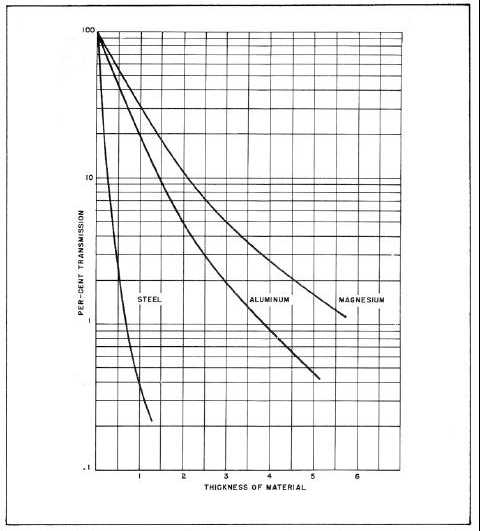T.O. 33B-1-1
6-68
Figure 6-33. Radiation Transmission versus Thickness for Various Densities at 150 kVp.
6.7.3.6.1
For materials of approximately uniform thickness where the range of transmitted X-ray intensities is small, the
technique producing high contrast will show all portions of the area of interest with an increased radiographic
sensitivity. If, however, the part radiographed transmits a wide range of X-ray intensities, then a technique producing
lower contrast will be necessary to record the detail in all portions of the radiograph, probably with some decrease in
radiographic sensitivity. In cases where an extreme range of intensities is transmitted, high radiographic contrast may
be obtained by loading the film holder with two high contrast films of different speeds. The kilovoltage and exposure
are so chosen that the thick portions of the object be satisfactorily recorded on the faster film and the thin portions on
the slower film.
6.7.3.7
Film Contrast.
Film contrast has been covered in Section III. In general, films of the no-screen type give higher contrast with or
without lead screens than screen type films with or without lead screens. Screen type films with calcium tungstate
screens, however, produce maximum contrast with sacrifice of detail due to the grain size of the screens. The contrast
of a film can be seen from the slope of the characteristic curves.

